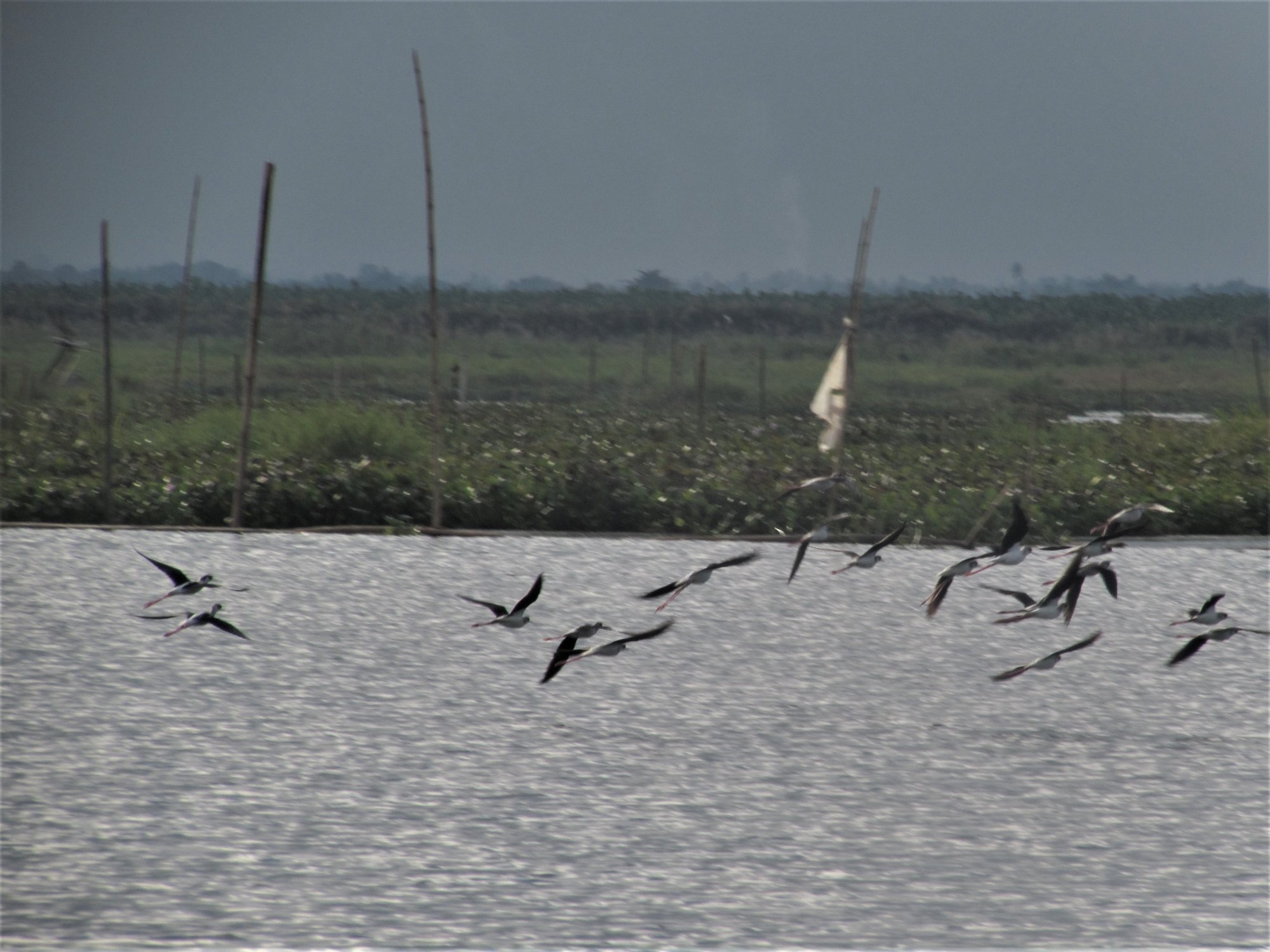Climate change blamed for dwindling number of waterbirds on Maguindanao lake

FREQUENT VISITORS The waterbird population on Lake Buluan has decreased by 46 percent. Environment officials said this could be due to climate change, which had killed some bushes and other species that served as food for the birds. —DYIBALINDONG / DENR-12
TACURONG CITY—Environment officials blamed climate change and global warming for the marked decrease in the number of waterbirds feeding on Lake Buluan, the marshland and inland waters of Sultan Kudarat.
Dr. Sabdullah Abubacar, regional executive director of the Department of Environment and Natural Resources (DENR) in the Soccsksargen region, said climate change had killed some bushes and other species that the birds must have been feeding on, prompting some of them to look somewhere else for food.
Abubacar said this to explain why the number of waterbirds monitored by environment personnel this year decreased by 46 percent or 8,900 of the 16,500 birds monitored last year.
The DENR conducted the bird counting on Jan. 22 and 23 in Sultan Kudarat marshlands and inland waters, including the Lake Buluan.
Abubacar called for the protection of the 6,300-hectare Lake Buluan spanning the borders of Maguindanao and Sultan Kudarat provinces where more than 20 species of waterbirds frequent.
Article continues after this advertisementLake Buluan has been considered among the country’s economically important lakes, which produces the famous Mindanao “tilapia.”
Article continues after this advertisementAbundance of foodAbubacar said the waterbirds were listed using direct counting and unit-sampling estimates.
Most of the birds were found on the Lutayan side of the lake, which covered about 3,600 ha. Mama Mulimpay, Tacurong City community environment and natural resources office’s (Cenro) Protected Area and Wildlife Section (PAWS) chief, said the waterbird population on Lake Buluan, specifically in the Lutayan side, was big as compared to other areas due to the abundance of food and also because of its serenity.
“The population of waterbird species in the area is still similar to our previous sightings except the Brahminy Kite. We noticed the decrease of its number during our counting,” Mulimpay said.
Abubacar said the bird counting, spearheaded by the Tacurong City Cenro, aimed at gathering estimates of waterbird population, determining changes in their numbers and improving knowledge of little known species and wetland sites. Illegal activitiesAside from the bird counting, the census also helped the DENR in monitoring possible illegal activities like bird hunting, according to forester Sainoding Hadjimanan of the Sultan Kudarat provincial environment and natural resources office.
“The DENR, in cooperation with the local governments of Lutayan and Buluan in Maguindanao, conducts regular monitoring in the area … to protect and preserve the various species of waterbirds in the lake,” Hadjimanan said. Waterbird species documented by the DENR in the area include the great bittern, cinnamon bittern, black-crowned night heron, rufous night heron, cattle egret, little egret, intermediate egret, great egret, purple heron, grey heron, javan pond heron, white-breasted waterhen, barred rail, banded rail, water rail, common crane, Philippine duck, lesser whistling duck, serpent eagle, brahminy kite and wandering duck. “We will continue to conduct information drive to increase public awareness on the importance of these waterbirds,” Mulimpay said.